Nowadays, the process of polishing the metal surface is one of the best ways to make visually appealing pieces. These components have a polishing surface finish, which not only makes them appear fantastic but also improves their functionality and lifespan. Over time, metal surfaces frequently discolor. Usually, interaction with deteriorating substances like airborne oxygen causes this. The surfaces of these metals are also frequently compromised by exposure to high temperatures and wear levels.
A polished metal item, however, is shielded from oxidation and contamination. In addition, it prevents corrosion and produces a reflective surface to maintain the surface's superior quality. A variety of metals used in bespoke manufacturing respond well to surface polishing. Let’s dive into numerous production polishing processes in the following paragraphs. We shall go over the various advantages of these procedures as well as their various uses. You will also pick up some crucial knowledge that is required for a proper polishing procedure.
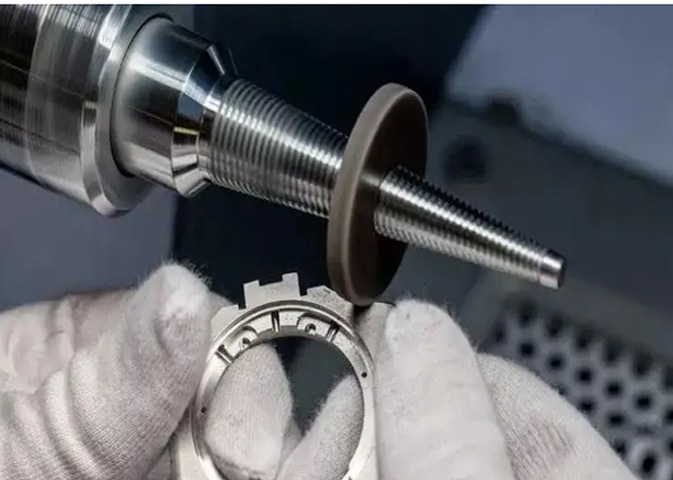
Typically, polishing entails finishing a metal surface using an abrasive material. Its goal is to enhance the sheen and gloss of completed machined parts by eliminating scratches and nicks. Buffing a polished surface produces a finish that is mirror-bright.
As was already noted, polishing is an excellent method for a variety of metal types. The metal polishing procedure will vary depending on the type of metal you need to polish. For example, harder metals are more suited for mechanized or robotic polishing, whereas softer metals could need both human polishing and buffing.
The following steps are typically included in the production polishing process:
Step 1: Roughing
The metal surface may have some scratches and other flaws from welding and joining during the CNC machining process. Roughening up the surface is, therefore, necessary in an effort to get rid of these flaws. This procedure can be used only for specific areas of the component. The entire part surface can also be roughened with the use of a roto-orbital sander. Small regions may require abrasives with grains ranging from 1500 to 3000 and a diameter of around 32 mm. However, larger surfaces are better suited for abrasive disks with a diameter of 150 mm and a grain size of 1200 or 1500.
Step 2: Buffing
Following the roughing process, the damaged region or the part surface can be thoroughly brushed using a quick-cut abrasive paste. Wool berets and polishing sponges are therefore used in the polishing surface finish process to aid in the distribution of the abrasive paste. There are various hardness levels for the berets and sponges. Therefore, we are able to produce prototypes and custom items with a distinct polished surface quality. Utilizing a microfiber cloth might aid in thoroughly cleaning the surface following the polishing procedure.
Step 3: Illuminating
After the procedure, the polishing stage frequently leaves a subtle surface. For the surface to regain its original, or even better, look, it is imperative that it be brightened. Additionally, the brightening procedure gives the component's overall finish consistency.
Step 4: Protecting
A greater degree of durability and strength component is the end goal of the majority of finishing procedures. As a result, following brightening, it is crucial to preserve the final finish. The majority of manufacturers do this by adding a layer of wax protection, which increases the final polished surface's durability.
Custom items can have their surfaces polished using a variety of techniques. Every one of these approaches has advantages and disadvantages. As such, the technique you choose will be influenced by some aspects, such as the product's intended use and overall cost, among many others. This will be discussed in the later sections of this text. Let's examine some of the reliable techniques for polishing surface finishes.
The material's surface is sliced or plastically deformed in this polishing technique. After that, polished convexities are eliminated to provide a smooth surface finish. In mechanical polishing, common tools include sandpaper, flat wheels, abrasive sticks, etc. These materials are best suited for tasks that require manual labor. However, surfaces that require high-quality finishes are worked on with auxiliary instruments such as turntables and ultra-precision polishing.
In ultra-precision polishing, a treated workpiece's surface is pressed against specialized abrasive instruments. The entire procedure is carried out in an abrasive-containing polishing solution while rotating at a high speed. With the use of this technique, a surface roughness of approximately 0.008μm may be attained, which is among the greatest results possible for a polishing procedure. Making optical lens molds for injection molding is a good use for this technique.
Benefits:
Brightness
Enhanced gloss on the surface
Improved ability to clean the surface
Increased visual appeal
Decreased adherence to the product
Drawbacks:
Increased labor intensity
Complex components cannot be handled.
Gloss could be constant but not very durable.
Possibly prone to corrosion
The protruding portion of a material surface is preferentially dissolved in a chemical media for this form of polishing surface finish. At the conclusion of the procedure, a smooth surface is desired. The metal surface is impacted by the chemical solution and galvanic coupling during the chemical polishing process. As a result, passivation layers start to develop.
Chemical polishing often results in the micro-roughness portion being smoothed and polished. Additionally, it causes the top layer of the portion to dissolve concurrently.
Benefits:
Complexly shaped workpieces may be polished.
Able to work on many projects at once
Reduced expenditure on equipment
Enhanced effectiveness
Strong resistance to corrosion
Drawbacks:
Inhomogeneous brightness results from it.
Challenging to heat
Hazardous elements might be released throughout the procedure.
It is challenging to modify and replenish polishing solutions.
What is electropolishing? This kind of polishing is sometimes referred to as electrochemical polishing. You could occasionally hear anodic polishing. They are all talking about a surface finish that is polished using a similar idea to chemical polishing. In order to obtain a finer surface finish, this technique also includes the application of chemical solutions to dissolve protrusions on metal surfaces.
However, in contrast to chemical polishing, electrolytic polishing does not include the cathode reaction. Additionally, in this instance, the polishing effect is far superior. The metal component's superfluous material is eliminated throughout this polishing procedure. In doing so, it smoothes out the part's micro-peaks and valleys, lowers surface roughness, and enhances surface polish.
This kind of polishing is sometimes referred to as electrochemical polishing. You could occasionally hear anodic polishing. They are all talking about a surface finish that is polished using a similar idea to chemical polishing. In order to obtain a finer surface finish, this technique also includes the application of chemical solutions to dissolve protrusions on metal surfaces.
However, in contrast to chemical polishing, electrolytic polishing does not include the cathode reaction. Additionally, in this instance, the polishing effect is far superior. The metal component's superfluous material is eliminated throughout this polishing procedure. In doing so, it smooths out the part's micro-peaks and valleys, lowers surface roughness, and enhances surface polish.
Benefits:
Luster lasts longer
There is consistency in both the surface and inside color.
It might be beneficial for a wide variety of mat
Cheap, quick cycle
Promotes low pollution
Increased resistance to corrosion
Drawbacks:
large equipment investment
Intricate pre-polishing procedure
For complicated items, additional electrodes and tooling are required.
For quick prototyping, electropolishing, also known as electrolytic polishing, is unquestionably superior to mechanical polishing. It gives the bespoke item a brilliant, shiny, extremely resistant to wear and corrosion finish.
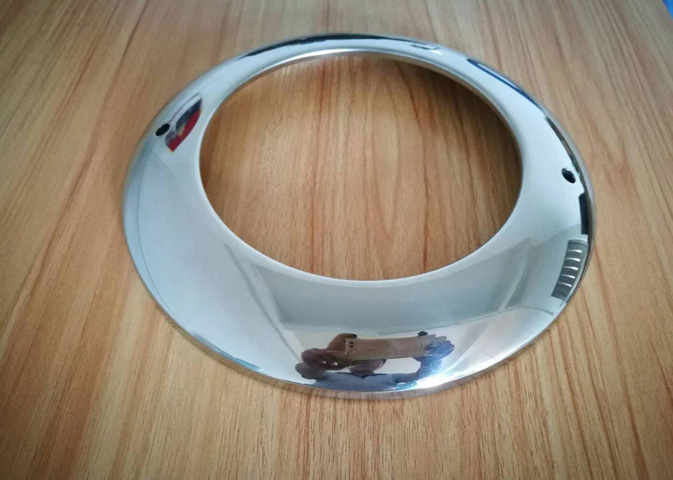
The following are some additional advantages that electropolishing provides over mechanical polishing:
It results in a significant decrease in the material's surface area. In general, this results in less contamination buildup and product adherence. It also enables more efficient cleaning of the finished product.
It expedites the deburring of materials. The electropolishing process is intrinsically characterized by higher current densities at high points and lower densities at low points. Burrs may therefore be eliminated much more quickly thanks to the higher densities at high spots. As a result, the final product has a clean, flat surface.
It enhances the machined part's appearance. Microscopic surfaces may be made smoother and cleaner with the right electropolish procedure. A metal that has been electropolished and polished has a glossy look. In this instance, visual inspection is more practical and any remaining defects are accentuated.
The smoothness of a highly polished surface is one of its main advantages. In other words, there's no possibility of dirt or microorganisms being lodged. As a result, it makes cleaning the part up to the point of sterility simple. These areas also usually stay clean.
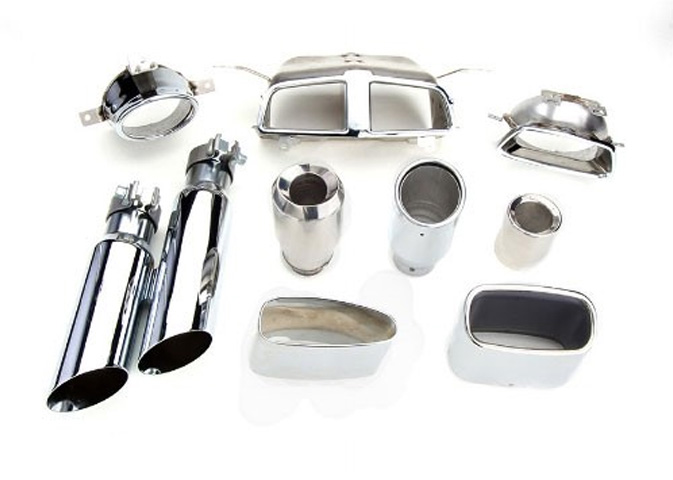
Furthermore, light can be sufficiently reflected by polished metal. Together, these provide a broad variety of applications for the industrial process of polishing. For this reason, polishing is used on a variety of metal parts in sectors such as medical, aerospace, and electrical. Parts with polished surfaces can be used for the following aspects:
manufacturing of medical equipment
mirrors and reflectors (such as safety mirrors, solar energy concentrators, etc.)
bumpers for fire trucks
seafaring fasteners
cracks in wire and springs
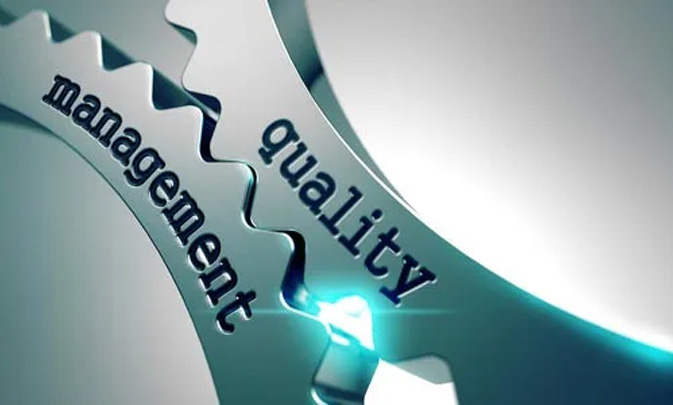
Over time, a variety of applications have emerged, causing the science of finishing services to change. Both pros and cons of polishing exist for low-volume and quick prototyping. Here are a few of them:
Benefits of Surface Polishing:
It enhances the metal part's capacity to be cleaned.
It strengthens the components' corrosion resistance.
Ensures better surface quality and visual attractiveness
Decreases the part's adhesive qualities
Eliminates rust from the surface of the metal
Drawbacks of Polishing Surface Finish:
High-purity applications could not benefit from mechanically
polished components.
Abrasives and other compounds can stay entrenched in the material.
It can need a lot of work.
Ensuring that the final items fulfill quality requirements is the ultimate goal of any low-volume production or prototype process. One of the most important post-production procedures to make sure the products meet the necessary requirements is surface finish. At Richconn, we recognize this and are prepared to fulfill your demand for prototyping.
At Richconn, we take pride in our top-notch finishes, which include the polishing surface finish, in addition to our top-notch professionals and production methods. We collaborate with you to assist you in selecting the best option for your machined item. The best part is that all of our services are reasonably priced. To receive a quote right away, upload the design you created now.
Polishing aids in giving custom-made pieces a smooth, glossy finish. It helps to keep the components looking better while lowering adhesion, increasing cleanability, and avoiding corrosion (by eliminating oxidation). Significant reflection is also left on the clean material surface by the polishing surface finish. Each of these attempts to guarantee that the parts live up to the expectations of the users.
Polishing chemicals are often abrasive. These abrasives are made from polishing powder combined with lipids and waxes, resulting in a cake or bar. These abrasives aid in applying neat, polished finishes and smooth metal surfaces.
In the manufacturing sector, buffing and polishing are two of the most used finishing techniques. Smoothing component surfaces enhances both their visual appeal and physical characteristics. This is the goal of both surface finishing techniques. But buffing calls for the use of abrasives that are fastened to the buffing wheel. However, polishing does not need adhering the abrasives made of grit to the wheel. This makes it possible to replace or remove the abrasive from the wheel quickly and easily.
Your items' surface shine is enhanced by the polishing surface finish. It enhances these items' performance and quality in a variety of ways. We covered the advantages of the polishing finish in this post along with its numerous uses. You may maximize the benefits of the industrial polishing process by following the advice given. For your unique components, we, richconn, are always prepared to provide the best polishing services. Your items will meet all requirements thanks to our experience. Reach out to us right now, and let's get to work.
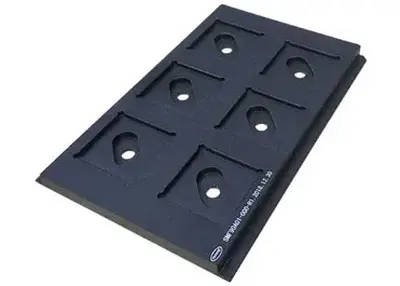 Semiconductor Chip Carrier Manufacturing: Introduction from Materials to Finished ProductsAugust 14, 2023With the development of science and technology, semiconductor chips are being widely used in various fields. High quality chip carriers are crucial to ensure the performance of chips during semiconduc...view
Semiconductor Chip Carrier Manufacturing: Introduction from Materials to Finished ProductsAugust 14, 2023With the development of science and technology, semiconductor chips are being widely used in various fields. High quality chip carriers are crucial to ensure the performance of chips during semiconduc...view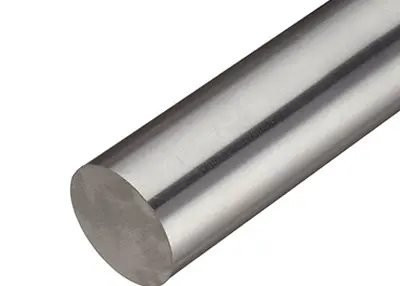 Inconel 718: A Superalloy with Lasting RelevanceOctober 12, 2023Metal 3D printing has finally catapulted Inconel, the classic nickel-based heat-resistant alloy, into the 21st century. Inconel 718, the hardened version of Inconel 625, is the latest addition to our growing range of metals for Direct Metal Laser Sintering (DMLS).view
Inconel 718: A Superalloy with Lasting RelevanceOctober 12, 2023Metal 3D printing has finally catapulted Inconel, the classic nickel-based heat-resistant alloy, into the 21st century. Inconel 718, the hardened version of Inconel 625, is the latest addition to our growing range of metals for Direct Metal Laser Sintering (DMLS).view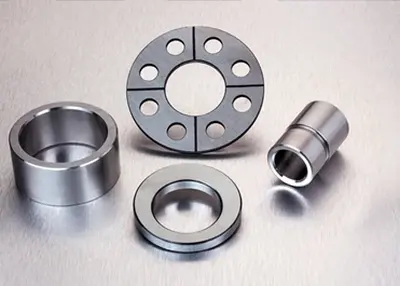 Five Axis CNC Machine Tool: Precision Machining of Carbon Fiber Composite MaterialsMay 22, 2023Further CNC cutting and drilling of raw carbon fiber parts is necessary to meet the precision requirements or assembly needs. According to new material introductions, carbon fiber reinforced composite...view
Five Axis CNC Machine Tool: Precision Machining of Carbon Fiber Composite MaterialsMay 22, 2023Further CNC cutting and drilling of raw carbon fiber parts is necessary to meet the precision requirements or assembly needs. According to new material introductions, carbon fiber reinforced composite...view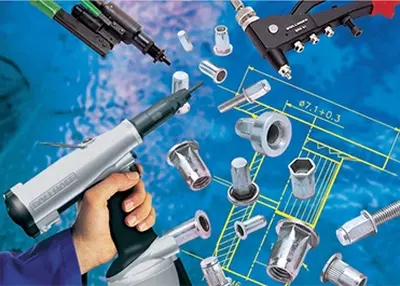 Rivets: 25 Types Of Introduction And User GuideSeptember 26, 2023Rivets are parts that join multiple components and structures together to form a complete body. These parts can be manipulated with some specialized tools. One of the panaceas of manufacturing is rivets. Depending on their design requirements and performance, different types of rivets can be used.view
Rivets: 25 Types Of Introduction And User GuideSeptember 26, 2023Rivets are parts that join multiple components and structures together to form a complete body. These parts can be manipulated with some specialized tools. One of the panaceas of manufacturing is rivets. Depending on their design requirements and performance, different types of rivets can be used.view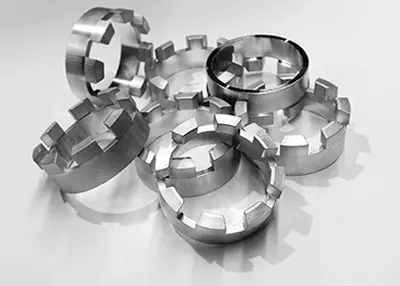 CNC Machining Titanium: Precision Craftsmanship and ApplicationsNovember 6, 2023Are you ready to dive into the world of CNC machining titanium? If you're an engineer, designer, or manufacturer seeking to master the art of CNC machining this remarkable metal, you've come to the right place. In this article, I will guide you through the intricacies of CNC machining titanium, offering valuable insights, best practices, and real-world applications.view
CNC Machining Titanium: Precision Craftsmanship and ApplicationsNovember 6, 2023Are you ready to dive into the world of CNC machining titanium? If you're an engineer, designer, or manufacturer seeking to master the art of CNC machining this remarkable metal, you've come to the right place. In this article, I will guide you through the intricacies of CNC machining titanium, offering valuable insights, best practices, and real-world applications.view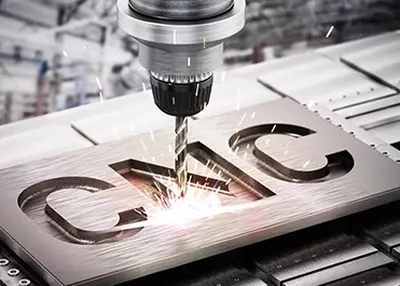 What is CNC: Unveiling the Precision RevolutionSeptember 20, 2023CNC (Computer Numerical Control) is an automated manufacturing technology that utilizes computer control systems to precisely manipulate machine tools and equipment for machining and manufacturing purposes.view
What is CNC: Unveiling the Precision RevolutionSeptember 20, 2023CNC (Computer Numerical Control) is an automated manufacturing technology that utilizes computer control systems to precisely manipulate machine tools and equipment for machining and manufacturing purposes.view